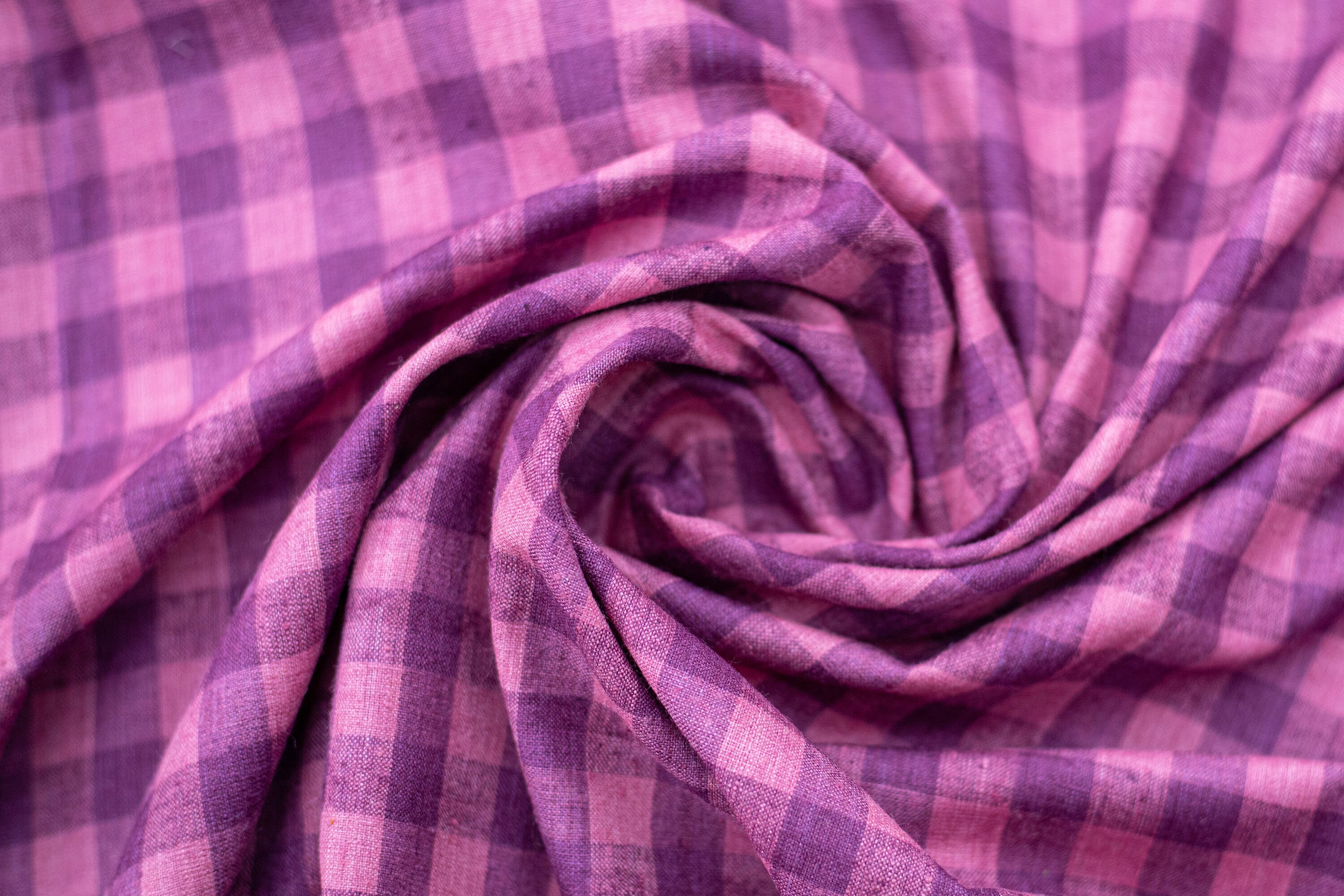Highlights



Description
FABRIC DETAILS -
100% Silk Fabric
Natural Hand-dyed Eri/ Peace Silk
GSM: 116 GSM
Count: 2/80*1/60 Mill Spun Eri Silk
Width: 45.5 inches
Construction- Plain Weave
Contemporary minimalist weaves in pure Endi/ Eri Silk. Sikiry's playful gingham checks in purple and pink.
Suitable for fashion, apparel and home textiles.
ABOUT ERI SILK -
Eri or Endi Silk is integral to North East India's tribal communities' cultural and natural heritage. It is extensively used to weave heirloom garments by matriarchs of the region and gifted as a symbol of love and strength, for Eri silk has incredible properties that keep it durable over generations.
Special characteristics of Eri Silk which is popularly known as Peace or Ahimsa Silk-
1) Cotton-like tactile comfort & sturdiness
2) Demonstrates UV protection properties
3) Good Moisture Absorbance
4) Fine lustre
5) No toxic chemical treatment used
6) Holds isothermal properties
7) Softness increases with each wash and use
8) Possesses Antibacterial and Antimicrobial properties
ON HAND-DYEING -
Sikiryu2019s team of local artisans specializes in hand dyeing with natural pigments and has been committed to creating a circular and sustainable silk industry for more than 20 years.
WASH & CARE INSTRUCTIONS -
-Gentle hand wash in cool water.
-Use a gentle PH neutral eco friendly washing detergent.
-Soak in cool water for not more than 5 -10 mins.
-Gently rub to remove stain spots if any and rinse well.
-Please do not wring the fabric too tightly.
-Dry in the shade and avoid direct sunlight.
-Dry iron with water/ mist spray to remove wrinkles.
-Please do not steam iron.
-Professional dry-cleaning is recommended.
FAQ -
A) Is Endi/Eri silk a vegan silk?
No, Eri Silk is not vegan. The silk fibre is extracted from cocoons which, as a matter of fact, is the hardened saliva of the silkworms. Compositionally, it is an animal protein called fibroin which is secreted as saliva from the silk glands of the silkworms/larvae. That makes silk a by-product of an animal.
B) Can Eri Silk be called Peace Silk?
Ericulture, the practice of rearing Eri/ Endi silkworms, is largely done by the tribal households in North East India.
All kinds of silk cocoons, be it Eri, Mulberry, Muga, or Tassar, need to undergo a process called "Degumming". Silk cocoons are made of two proteins - fibroin (the core constituent of silk fibres) and sericin (glue protein that binds the cocoon). Sericin, being water soluble, is removed by boiling the cocoons in an alkaline solution (water + soda). This degumming stage makes Endi/Eri silk different from other silks, as no Endi/Eri silkworms remain inside the cocoons. Either they are extracted as pupae or allowed to metamorphose into silkmoths.
But there is more to it...
Eri/ Endi silkworms are treated as a delicacy among various tribal groups. More often than not, you would find many people rearing Eri silkworms for food than for silk fibre. These silkworms form a rich source of protein in tribal food culture. The live silkworms are extracted in their pupae stage and sold in tribal markets.
We at SIKIRY are sensitive and respectful towards our tribal diet that has sustained a fully domesticated silkworm population for centuries.
WHO ARE WE -
SIKIRY is a family of local indigenous weavers with generational expertise in rearing Endi/ Eri silkworms and weaving exquisite fabrics that will last more than a lifetime!
To know more about Endi/Eri silk please visit our page - ./wear.sikiry/
For wholesale enquiries please inbox your details and we will connect shortly.
Thank you for visiting our shop.